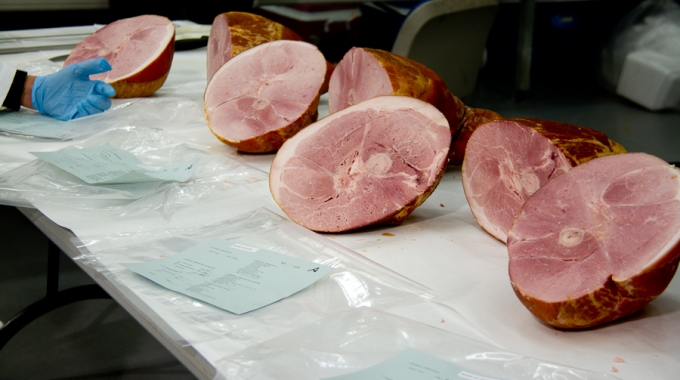
Nitrites are something that have been in the news off and on since the 1980’s. One news story tells you they cause cancer, the next one tells you the health benefits of nitrites. There have even been billboards trying to prey on the fear that hot dogs are just as bad as smoking cigarettes.  Some products claim to be “nitrite free” but are they really nitrite free…? There’s so much information out there, what’s the real story? Before we get down to the real story, let’s cover what a nitrite is and how it ended up in our beloved cured meats like hot dogs and bacon.
Some products claim to be “nitrite free” but are they really nitrite free…? There’s so much information out there, what’s the real story? Before we get down to the real story, let’s cover what a nitrite is and how it ended up in our beloved cured meats like hot dogs and bacon.
Where did nitrites come from? And what purpose do they serve in our food?
Most historians say that curing of meat was likely discovered by accident and can be traced to the use of salt that happened to be contaminated with potassium or sodium nitrate, commonly known as “saltpeter.” Saltpeter has been used since the Middle Ages to preserve meat well before the discovery of refrigeration. It was discovered that salt not only helped extend the shelf life (or preserve) the meat by preventing rancidity, it also controlled the growth of bacteria.
Today, purified nitrate and nitrite are commercial manufactured (synthetically made) for a variety of uses besides cured meat. Broken down into it’s purest forms it’s basically a nitrogen atom and either two (nitrite; NO2) or three (nitrate; NO3) oxygen atoms. When it’s added in processed meats it is usually combined with sodium or potassium. As time continued on and we discovered it wasn’t the salt but the nitrites IN the salt which preserved these meat products. Nitrites and nitrates were then added to cured meat products (beginning all the way back in 1925) and produce these results: 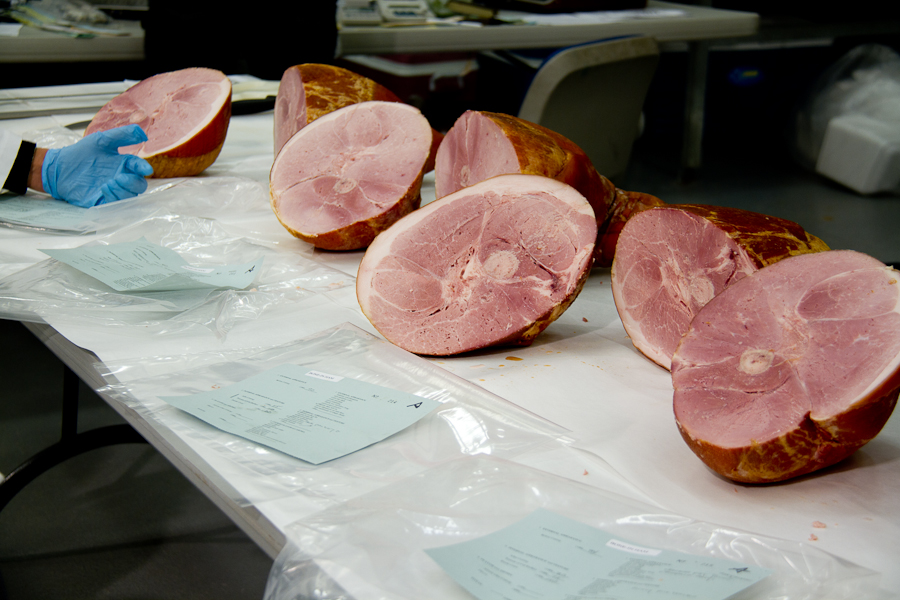
- Nitrites produce a pink color in cured meats and that pink color lasts. (for more about meat color, check out this post about brown meat)
- Nitrites produce that distinct cured meat flavor. Think about the taste difference between a ham and regular uncured pork.
- Nitrites prevents the meat from going rancid and protects the flavor.
- Most importantly, nitrites act as a form of food safety by protecting the meat from bacteria that cause disease and spoilage. The use of nitrites in cured meats completely inhibits Clostridium botulinum growth (commonly known as botulism), almost completely inhibits Clostridium perfringens (bacteria known as the third most common cause of food poisoning in the U.S.), and slows the growth of other bacteria such as Listeria monocytogenes (bacteria known as leading cause of death among foodborne bacterial pathogens).
So where did this idea of nitrites causing cancer come from?
During studies on nitrites and proteins, it was identified that if high levels of nitrites exist in foods that are high in protein (ie: meat) are exposed and cooked to a temperature (300°F+) small amounts of nitrosamines (which are compounds that are classified as carcinogen) could be formed. As a result, curing (usage of nitrites) is carefully controlled. Processors have also since started to add compounds that act as antioxidants ascorbate (vitamin C) and erythorbate, to cured meats to block the formation of nitrosamines. If you look at our label, you can find erythorbate in almost all of our cured meat products.
Pure nitrite, if consumed at levels of 3-5 grams, equivalent to 6,000 to 10,000 servings of cured meat eaten at one sitting, can be extremely dangerous and even cause death. Pure nitrite would bind to the oxygen in your body stronger than the hemoglobinoxygen binding in your blood, thus not allowing oxygen to reach important organs. It is because of this that pure nitrite cannot be found. Instead nitrites and nitrates are bound to sodium 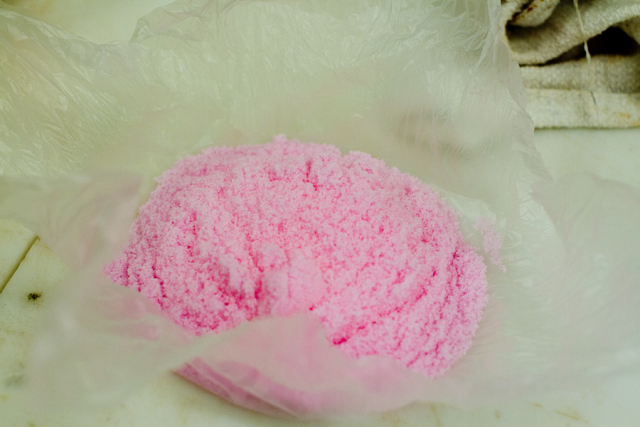 and sold as sodium nitrite so that even if you were to trying to ingest fatal levels of nitrites, it would be the (salt) sodium that would be most toxic before the nitrite itself. Since purified sodium nitrite is naturally white in color and could be potentially mistaken for regular table salt, sodium chloride, sodium nitrite is often dyed pink in color, hence the name some people commonly call it “pink cure” or “pink salt” when referring to curing.
and sold as sodium nitrite so that even if you were to trying to ingest fatal levels of nitrites, it would be the (salt) sodium that would be most toxic before the nitrite itself. Since purified sodium nitrite is naturally white in color and could be potentially mistaken for regular table salt, sodium chloride, sodium nitrite is often dyed pink in color, hence the name some people commonly call it “pink cure” or “pink salt” when referring to curing.
Nitrite and nitrate levels in meat production are carefully controlled by federal laws and monitored by the USDA and state government officials. DECADES of research have shown when nitrates and nitrites are used following prescribed, regulated levels, these ingredients are completely safe and pose no human health risks. And in fact, throughout the years, curing meats have improved efficiency allowing meat processors to use approximately one fifth the amount of nitrites they used 25 years ago.
Is cured meat our number one dietary source for nitrites?
There has been a lot of confusion and finger pointing at cured meats being our number one source for nitrites. Our number one dietary source for nitrites are in fact leafy vegetables such a spinach, cabbage, and celery. Nitrates accumulate in these plants from the uptake of nitrogen in the soil during the growing period and upon coming in contact with our saliva, nitrates convert to nitrites and are ingested. Nearly 80% to 85% of the nitrates we consume is from vegetables. Spinach for example may contain 500 to 1900 parts per million of nitrate versus the amount of nitrite allowed by USDA to be added at 156 parts per million. In most cases however, after the processing the amount remaining in the final product is typically 10 parts per million or less. Nearly 90% of nitrite added to meats is broken down and converted into other safe compounds during the processing. Cured meats serve as a small source, only 5%, of our total nitrite intake. Another source of our nitrate and nitrite intake can be from water, depending on the amount you drink.
Can cured meats be produced without nitrites? What about products that claim to be “nitrite free”?
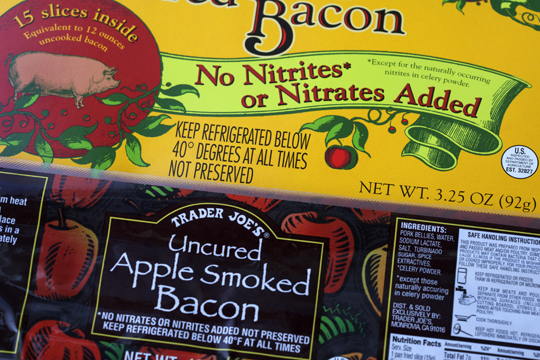 Since nitrates and nitrites are considered an extremely important part of meat processing for safety, quality, and health, natural sources of sodium nitrite has been explored and used to replace sodium nitrite in cured products. Vegetables high in naturally accumulating nitrate and nitrite (like celery mentioned above) are now commonly used to cure meat products.
Since nitrates and nitrites are considered an extremely important part of meat processing for safety, quality, and health, natural sources of sodium nitrite has been explored and used to replace sodium nitrite in cured products. Vegetables high in naturally accumulating nitrate and nitrite (like celery mentioned above) are now commonly used to cure meat products.
Celery is commonly used in a powder or juice form that has been treated with a bacterial culture (much like those found in our saliva) to turn those nitrates to nitrites. The concentrated juice or powder is what is most commonly used in your “no nitrite added” or sometimes even “organic” processed meats. And you can find celery juice, celery powder, or sometimes beet juice on the label. USDA has regulated that traditional curing REQUIRES the addition of nitrite. Since in natural or sometimes organic processed meats you are adding celery juice, not nitrites, USDA has mandated that these products must be labeled as “uncured”.
Terminologies such as “uncured” or “no nitrites added” are confusing to consumers and customers, because most people who buy these products are looking to avoid nitrites at all. But the fact is that these products DO contain nitrites. There is absolutely NO difference between the purified form of sodium nitrite or the plant based nitrate turned nitrite. They are the exact same molecules, just derived from different sources. So why did USDA mandate these plant based nitrates be labeled uncured? Well that’s because the amount of nitrite that forms from nitrate in the celery powder or juice is difficult to monitor, unlike with sodium nitrite which is strictly regulated and controlled in order to minimize nitrosamine formation all while maximizing protection against bacteria like botulism. Sometimes the nitrites found in products cured with the celery powder or juice would contain less nitrites and sometimes vastly greater amounts than found in products cured with the purified sodium nitrite. To USDA, this deemed that the risk for nitrosamine formation or bacterial contamination in the plant based version is more challenging to evaluate, so in turn, these products are required to be labeled “uncured”. USDA has continually made efforts to update this labeling is making advances in eliminating risk when curing with plant based nitrites but no such mandates have been issued on regards to the subject.
So how can you tell which method your meat product was cured with?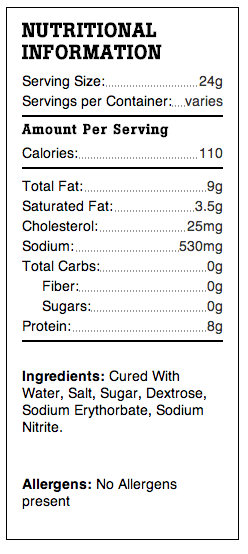
Look at the label. If your meat product was cured using a purified source, you will see the words “sodium nitrite” clearly on the ingredients statement. (see label to the right) If your meat product was cured using a plant based or natural source, you will see the words “celery powder/celery juice” or another similar vegetable ingredient on the label instead. Either ingredient, by law, is required to be listed on the ingredients statement portion of the label. You may also see the antioxidants ascorbate or erythorbate listed as well.
So what’s the real story…?
The real story is that nitrites in cured meats pose no threat to human health. Products that are labeled “nitrite-free” are labeled because there is no synthetic purified sodium nitrite added, but they DO indeed contain nitrites. Nitrites not only give us a way to preserve meat from going rancid quickly, they also allow block the growth of extremely harmful bacteria like botulism. And since sodium nitrite was approved for cured meat use in 1925, no cases of botulism have been associated with commercially prepared meats. The fact is that we have nitrites in our cured meat to thank for playing an important role in food safety.
The real story: “It is possible to avoid cured meats completely and still have a terrible diet while one can have a healthy diet by occasionally indulging in these tasty (cured meat) morsels. Emphasize a mostly plant-based diet? By all means. But dogmatic tirades against hot dogs (cured meat)? That’s ideology, not science.”
For more information about nitrites and nitrates in cured meats:
What’s the Deal with Nitrates and Nitrites in Cured Meat – Jeff Sindelar Ph.D, University of Wisconsin-Madison
Is Celery Juice a Viable Alternative to Nitrites in Cured Meats – Joe Schwarcz, Office for Science and Society
What is a Nitrate? – Janeal, meat scientist and blogger Mom at the Meat Counter
Meat Myth Crushers video on Nitrites featuring Dr. Jeff Sindelar
The No Nitrites Added Hoax – Michael Ruhlman

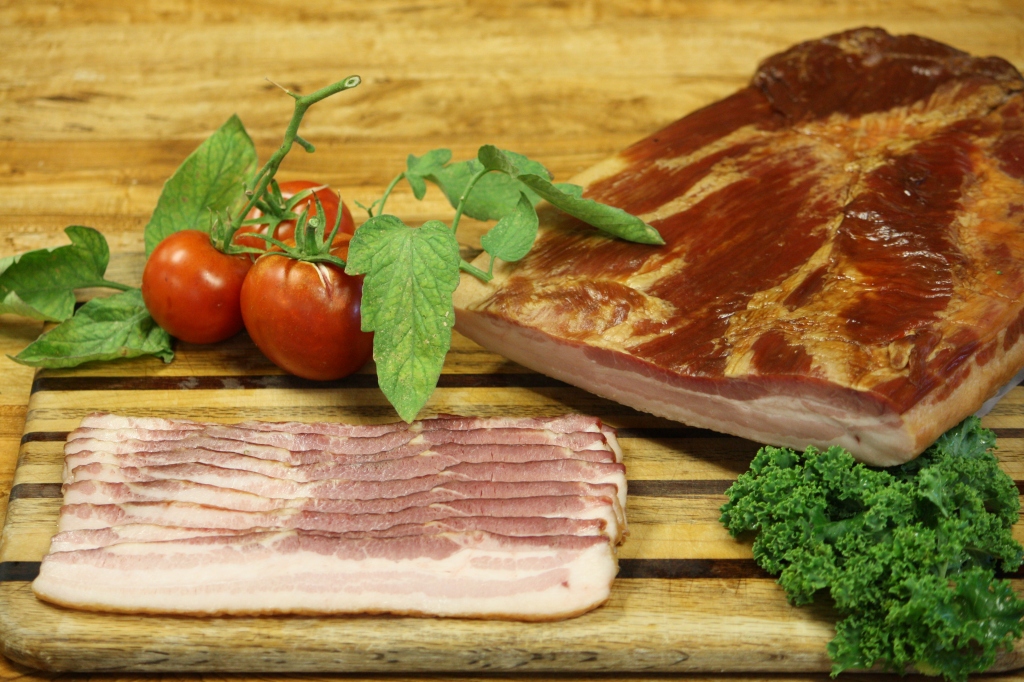

Interesting, you didn’t mention the obvious danger that certain meats are treated using Ammonium gas. So if I eat an burger treated with ammonium gas and a hot dog containing nitrates, in my tummy they could combine to make Ammonium Nitrate and I could EXPLODE! (although that usually only happens when I put a lot of onions on my hot dogs… and chilli…). So how come I’m not seeing THAT warning anywhere! … still….. worth the risk I reckon, I love me some mango jalapeno sausage.
Pingback: The Bacon Craze.. How Did This Happen? | Chico Locker & Sausage Co. Inc.
Pingback: Gro Master, Inc. | Post-Easter Ham
Have you ever used Celery juice powder to cure your pork belly to turn it into bacon?? If so, I surely would like to know your recipe and any help with it…thanks